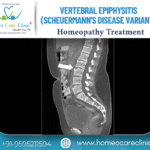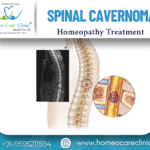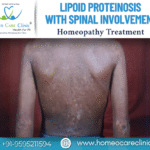Microcephalic Osteodysplastic Primordial Dwarfism- Type II (MOPD II) -is a rare genetic disorder characterized by severe growth restriction, both before and after birth. People with MOPD II have proportionate but extremely small stature, distinctive facial features, skeletal abnormalities, and an increased risk of certain medical complications.
Key Features of MOPD II
- Growth and Physical Characteristics:
Severe intrauterine growth restriction (IUGR)
Extremely short stature (adult height <100 cm or ~3 feet)
Low birth weight
Disproportionately small head (microcephaly)
Delicate bones and skeletal abnormalities
- Facial Features:
Prominent nose with a narrow bridge
Receding jaw (micrognathia)
Large eyes
Sparse hair and eyebrows
- Intellectual and Neurological Development:
Most individuals have normal intelligence, though some may experience mild learning difficulties
Brain abnormalities, such as vascular issues, can occur
- Medical Complications:
Increased risk of vascular problems, including aneurysms (weakened blood vessels)
Insulin resistance or early-onset diabetes
Dental abnormalities
Susceptibility to infections due to a weakened immune system
Causes of Microcephalic Osteodysplastic Primordial Dwarfism Type II (MOPD Il
- Genetic Mutation:
MOPD II is an autosomal recessive disorder, meaning an affected individual inherits two mutated copies of the PCNT gene—one from each parent.
This mutation leads to defective centrosome function, which affects cell division and results in abnormal growth and development.
- Impaired Cell Division:
The mutation disrupts normal mitotic spindle formation and cell cycle regulation.
This particularly affects rapidly dividing cells, leading to severe growth restriction and microcephaly (small head size).
- Defective Skeletal Development:
Pericentrin plays a role in bone development.
Its dysfunction leads to osteodysplasia, which causes short stature, abnormal skeletal structure, and joint abnormalities.
- Vascular and Neurological Impact:
Some individuals with MOPD II develop brain abnormalities and an increased risk of aneurysms due to defective vascular development.
Homeopathic Perspective on MOPD II
Homeopathy aims to treat symptoms and improve overall well-being rather than directly altering genetic conditions. Since MOPD II is a congenital disorder, homeopathy cannot cure or reverse it. However, it may help manage associated symptoms, improve quality of life, and provide supportive care.
- Calcarea Phosphorica – For delayed growth, weak bones, and developmental issues.
- Silicea – For poor assimilation of nutrients, fragile bones, and delayed milestones.
- Baryta Carbonica – Often used for children with developmental delays and stunted growth.
- Tuberculinum – For individuals prone to infections and weakness
- Symphytum – For bone strength and fracture healing.
- Natrum Muriaticum – For nutritional imbalances and failure to thrive.
Symptoms of Microcephalic Osteodysplastic Primordial Dwarfism- Type II (MOPD II)
1)Growth & Development
Severe prenatal and postnatal growth retardation – significantly shorter than average height and weight
Microcephaly – abnormally small head size, which persists throughout life
Proportionate but extremely short stature.
2)Skeletal & Facial Features
Abnormal bone development (osteodysplasia) – thin bones prone to fractures
Shortened limbs – arms and legs are notably small
Hip abnormalities – possible hip dislocations
Distinctive facial features – prominent nose, sparse hair, large eyes, and a small jaw (micrognathia).
3)Neurological & Cognitive Features
Mild to moderate intellectual disability – some individuals may have normal intelligence
Vascular issues – increased risk of Moyamoya disease (a condition affecting brain blood flow, increasing stroke risk)
Seizures – occasionally observed.
Dental abnormalities – small and misaligned teeth
Insulin resistance – increased risk of diabetes
Hearing loss – some cases reported
Sparse or fine hair – thin or slow-growing hair.
FAQS for Microcephalic Osteodysplastic Primordial Dwarfism- Type II (MOPD II)-
- How rare is MOPD II?
It is extremely rare, with only a few hundred reported cases worldwide.
- How is MOPD II diagnosed?
Diagnosis is based on clinical symptoms, genetic testing for PCNT mutations, and imaging studies showing skeletal abnormalities.
- Can MOPD II be treated?
There is no cure, but management includes regular monitoring, physical therapy, and treatments for specific complications such as aneurysms or skeletal issues.
- What are the biggest health risks?
Brain aneurysms, which can be life-threatening
Bone and joint problems, leading to mobility issues
Dental abnormalities requiring specialized care
- Will a child with MOPD II grow normally?
No, children with MOPD II remain significantly smaller than average, usually reaching a height of 3 to 4 feet in adulthood.
Microcephalic Osteodysplastic Primordial Dwarfism- Type II (MOPD II) -is a rare genetic disorder characterized by severe growth restriction, both before and after birth. People with MOPD II have proportionate but extremely small stature, distinctive facial features, skeletal abnormalities, and an increased risk of certain medical complications.
To schedule an appointment or learn more about our treatment, please visit our website or give us a call +91 9595211594 Our friendly staff will be happy to assist you. If you’re searching for the best homeopathy doctor, we are here to help.
Follow us on Facebook, Twitter, and Instagram for valuable insights into the world of homeopathy and holistic health.
Facebook – https://www.facebook.com/homeocareclinicpune
Instagram – https://www.instagram.com/homeocareclinic_in
Website – https://www.homeocareclinic.in
Chat with a best homeopathic doctor privately
If you have any queries regarding your disease or any symptoms, Click to send a WhatsApp message. Our best homeopathy dr will be happy to answers you.
Book an Appointment
If you want to visit our clinic, Click to book an appointment.
Online treatment
If you are a busy professional, or you are living in a remote town or city, with no best homeopathic doctor near you, Clickhere to start an online homeopathic treatment with the world’s exclusive, most experienced and best homeopathic clinic, managed by Dr. Vaseem Choudhary world-renowned homeopathic doctor expert.






